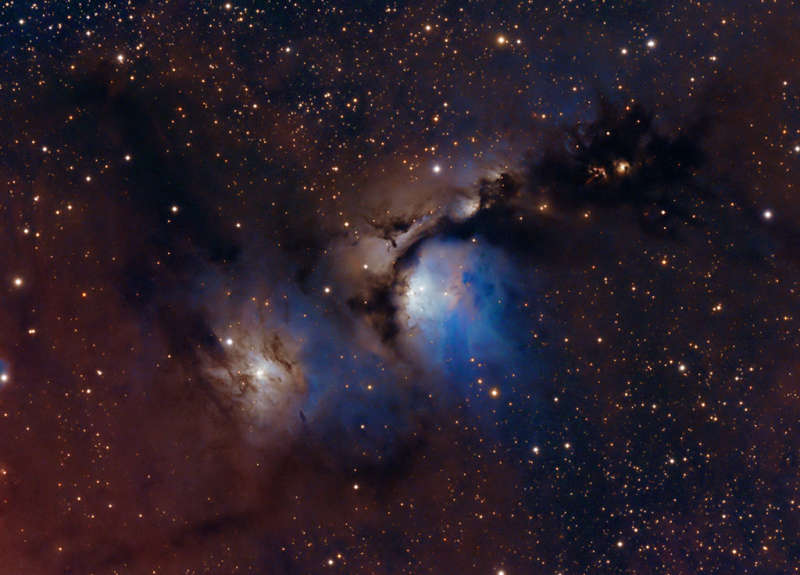Credit & Copyright: Richard S. Wright Jr.
Explanation:
Interstellar
dust clouds and bright nebulae abound in the fertile
constellation of Orion.
One of the
brightest,
M78, is near the center in
this colorful telescopic view,
covering
an area north of Orion's belt.
At a distance of about 1,500 light-years, the
bluish nebula itself
is about 5 light-years across.
Its blue tint is due to dust
preferentially
reflecting the blue light
of hot, young stars in the region.
Dark dust lanes and other nebulae can easily be traced
through the gorgeous skyscape that includes many
Herbig-
Haro objects, energetic jets from stars in the process
of formation.
But missing from this image is McNeil's nebula.
A major discovery
only recognized in 2004, the enigmatic, variable nebula was
found along the dark lane of dust above and right of larger M78.
McNeil's nebula is associated with a protostar and seen to be
sometimes present and sometimes absent in photos of the
well-imaged region.
McNeil's nebula faded
from view late last year and
is still absent in this deep image recorded in February 2019.
1999 2000 2001 2002 2003 2004 2005 2006 2007 2008 2009 2010 2011 2012 2013 2014 2015 2016 2017 2018 2019 2020 2021 2022 2023 2024 2025 |
Январь Февраль Март Апрель Май Июнь Июль Август Сентябрь Октябрь Ноябрь Декабрь |
NASA Web Site Statements, Warnings, and Disclaimers
NASA Official: Jay Norris. Specific rights apply.
A service of: LHEA at NASA / GSFC
& Michigan Tech. U.
|
Публикации с ключевыми словами:
M 78 - эмиссионная туманность - отражательные туманности
Публикации со словами: M 78 - эмиссионная туманность - отражательные туманности | |
См. также:
Все публикации на ту же тему >> | |
